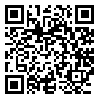BibTeX | RIS | EndNote | Medlars | ProCite | Reference Manager | RefWorks
Send citation to:
URL: http://jcpp.iut.ac.ir/article-1-784-en.html
Aphids are known as important pests of plants specially almond trees. Seasonal population fluctuation of two aphid species, Brachycaudus amygdalinus (Schout.) and Hyalopterus amygdali (Blanch.) were studied in 1999-2000 on almond trees in Najafabad area. Characteristics such as times of egg hatch, appearance, outbreak, spring migration to alternative hosts, migration from alternative hosts in fall, oviposition, number of eggs laid, damage degree, alternative, other primary hosts and some natural enemies were investigated. In early spring damage signs of B. amygdalinus were expressed on almond twigs as serious leaf curling followed by retarded growth of twigs and shortened internodes. Shortly after that H. amygdali colonized other leaves. For both species egg hatching was coincided in late winter however colonization and population increase of H. amygdalei were observed two weeks later than what was observed for B. amygdalinus. With the onset of warm season, both species moved from almonds to alternative hosts for aestivation. Gynoparae shortly followed by males appeared on alternative hosts in late summer and migrated to almonds. Oviparae produced by gynoparae mated with males and laid their eggs near the buds.
| Rights and permissions | |
 | This work is licensed under a Creative Commons Attribution-NonCommercial 4.0 International License. |






